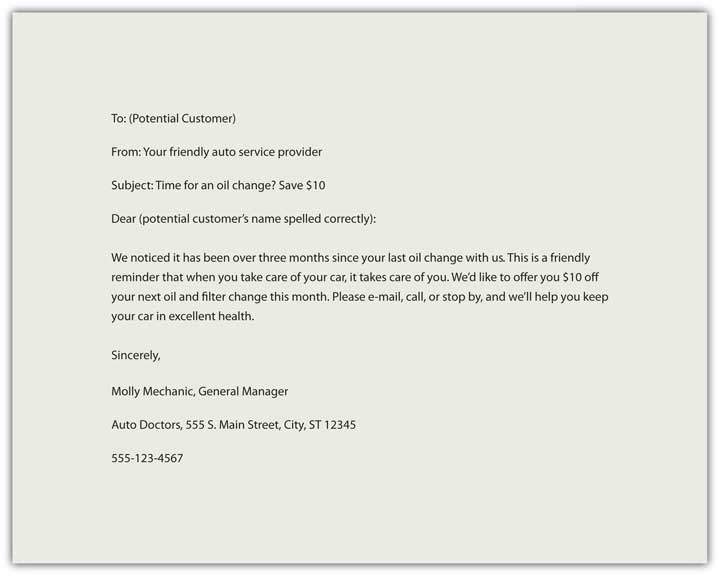A sales messageThe central persuasive message that intrigues, informs, persuades, calls to action, and closes the sale. is the central persuasive message that intrigues, informs, persuades, calls to action, and closes the sale. Not every sales message will make a direct sale, but the goal remains. Whether your sales message is embedded in a letter, represented in a proposal, or broadcast across radio or television, the purpose stays the same.
Sales messages are often discussed in terms of reason versus emotion. Every message has elements of ethosCredibility., or credibility; pathosPassion and enthusiasm., or passion and enthusiasm; and logosLogic and reason., or logic and reason. If your sales message focuses exclusively on reason with cold, hard facts and nothing but the facts, you may appeal to some audience, but certainly not the majority. Buyers make purchase decisions on emotion as well as reason, and even if they have researched all the relevant facts about competing products, the decision may still come down to impulse, emotion, and desire. If your sales message focuses exclusively on emotion, with little or no substance, it may not be taken seriously. Finally, if your sales message does not appear to have credibility, the message will be dismissed. In the case of the sales message, you need to meet the audience’s needs that vary greatly.
In general, appeals to emotion pique curiosity and get our attention, but some attention to reason and facts should also be included. That doesn’t mean we need to spell out the technical manual on the product on the opening sale message, but basic information about design or features, in specific, concrete ways can help an audience make sense of your message and the product or service. Avoid using too many abstract terms or references, as not everyone will understand these. You want your sales message to do the work, not the audience.
A sales message has the five main parts of any persuasive message.
Table 13.6 Five Main Parts of a Persuasive Message
| Attention Statement | Use humor, novelty, surprise, or the unusual to get attention. |
| Introduction | Build interest by appealing to common needs and wants, and include a purpose statement to set up expectations. |
| Body | Establish credibility, discuss attractive features, and compare with competitors, addressing concerns or potential questions before they are even considered. |
| Conclusion | Sum it up and offer solution steps or calls to action, motivating the audience to take the next step. The smaller the step, the more likely the audience will comply. Set up your audience for an effective closing. |
| Residual Message | Make the sale, make them remember you, and make sure your final words relate to the most important information, like a contact phone number. |
Your sales message will compete with hundreds of other messages and you want it to stand out.Price, D. (2005, October 30). How to communicate your sales message so buyers take action now! Retrieved June 14, 2009, from ezinearticles.com: http://ezinearticles.com/?How-To-Communicate-Your-Sales-Message-So-Buyers-Take-Action-Now!&id=89569 One effective way to do that is to make sure your attention statement(s) and introduction clearly state how the reader or listener will benefit.
Regardless of the product or service, the audience is going to consider first what is in it for them. A benefitWhat the buyer gains with the purchase. is what the buyer gains with the purchase and is central to your sales message. They may gain social status, popularity, sex appeal, or even reduce or eliminate something they don’t want. Your sales message should clearly communicate the benefits of your product or service.Winston, W., & Granat, J. (1997). Persuasive advertising for entrepreneurs and small business owners: How to create more effective sales messages. New York, NY: Routledge.
Your product or service may sell itself, but if you require a sales message, you may want to consider these strategies for success:
These four steps can help improve your sales message, and your sales. Invest your time in planning and preparation, and consider the audience’s needs as you prepare your sales message.
Figure 13.14 Sample E-mail Sales Message

A sales message combines emotion and reason, and reinforces credibility, to create interest in a product or service that leads to a sale.